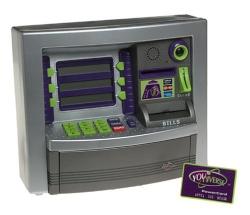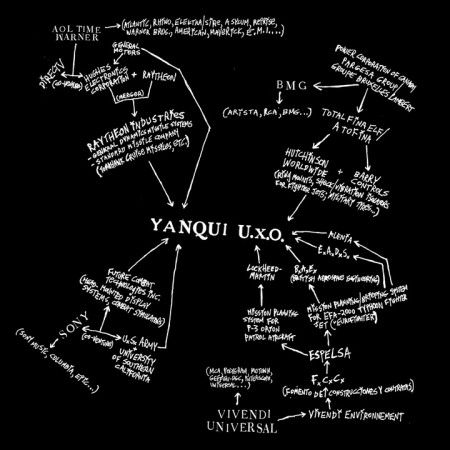So yesterday my wife, son, and I ventured for the first time into Kids-R-Us, home of the well-behaved toddler, destination of choice for the stark raving mad parent. Our visit deserves a separate post of its own (suffice it to say that it ended with the purchase of 100 plastic balls, each the size of a grapefruit), but what really needs to be said is this: why does a child need a play ATM machine?
Here you see an image (Larger Image) of what the proud parent ahead of me in the checkout line bought their little girl: the YOUniverse ATM toy, complete with a plastic ATM card, an alphanumeric keypad, a functioning screen, a slot that accepts bills, and Baby’s first PIN number. WTF? Seriously, a PIN number.
It’s true that many toys are nothing but thinly disguised training tools, preparing our children for the drudgery of adult labor–play kitchens, play vacuums, play tools–but I think the play banking machine is a different beast altogether.
The machine takes for granted an idea that I will go to my deathbed resisting: that our electronic lives–our database selves composed of PINs, account numbers, credit records, virtually every transaction of our day-to-day lives, stored and aggregated in corporate datawarehouses–are essentially our whole identity.
Without that PIN, we’re nothing.
I am reminded of a scene in Don DeLillo’s White Noise, in which our hero Jack Gladney visits an ATM machine:
In the morning I walked to the bank. I went to the automatic teller machine to check my balance. I inserted my card, entered my secret code, tapped out my request. The figure on the screen roughly corresponded to my independent estimate, feebly arrived at after long searches through documents, tormented arithmetic. Waves of relief and gratitude flowed over me. The system had blessed my life. I felt its support and approval….What a pleasing interaction. I sensed that something of deep personal value, but not money, not that at all, had been authenticated and confirmed. (White Noise 46)
Written over twenty years ago, this passage still seems fresh–if only we stop to think about it. Automatic Teller Machines have become such a part of our daily life that we forget. “Automatic” now describes us as much as it does the machines themselves.
DeLillo continues, “the system was invisible, which made it all the more impressive, all the more disquieting to deal with.” I think Baby’s First ATM functions as an innoculation to the more disquieting, unsettling aspects of our second, database selves. It’s not a conscious effort by the banking industry, of course (I am not that conspiracy minded). Rather, I think it’s the absurd, logical extension of the reduction of our lives to sets of data owned by corporations.

